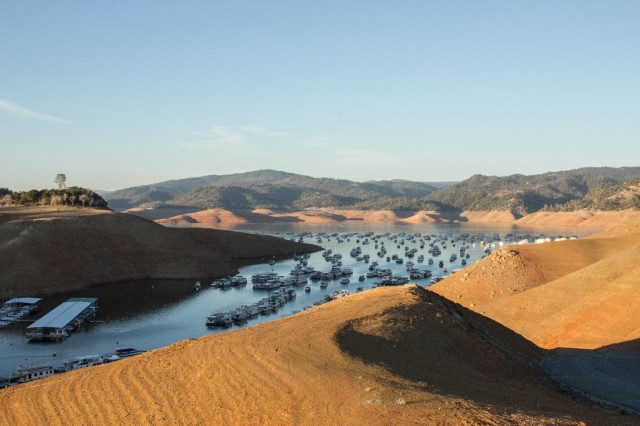
Gov. Jerry Brown and the leaders of the state Senate and Assembly have unveiled a proposal to deliver about $690 million in aid -- ranging from housing and food assistance to help in securing emergency water supplies -- to communities feeling the worst effects of California's drought.
Brown appeared in Sacramento on Wednesday afternoon with state Senate President pro Tem Darrell Steinberg and Assembly Speaker John Peréz to announce the relief package.
"This is a call to action," Brown said. "We must all do our part to conserve in this drought. The state is doing its part by providing immediate funding for drinking water, food, housing and assistance for water-conserving technologies."
A bullet-point list of the proposed actions:
- $25.3 million from the General Fund for food assistance, which will be structured to maximize the potential federal drought assistance that can be provided for food to those impacted by the drought.
- $21 million from the General Fund and federal funds for housing-related assistance for individuals impacted by the drought.
- $549 million from the accelerated expenditure of voter-approved bonds, Proposition 84 and Proposition 1E, in the form of infrastructure grants for local and regional projects that are already planned or partially completed to increase local reliability, including recapturing stormwater, to expand the use and distribution of recycled water, to enhance the management and recharging of groundwater storage and to strengthen water conservation.
- $20 million transferred from the Greenhouse Gas Reduction Fund to the Department of Water Resources (DWR) for direct expenditures and grants to state and local agencies to improve water use efficiency, save energy and reduce greenhouse gas emissions from state and local water transportation and management systems.
- $14 million for groundwater management across the state, including assistance to disadvantaged communities with groundwater contamination exacerbated by the drought.
- $10 million transferred from the Greenhouse Gas Emissions Fund for the California Department of Food and Agriculture to invest in irrigation and water pumping systems that reduce water use, energy use and greenhouse gas emissions.
- $10 million transferred from the Greenhouse Gas Emissions Fund for the DWR to establish a grant program for state and local agencies to implement residential, commercial or institutional water efficiency projects that reduce water and energy use.
- $15 million from the General Fund for Emergency Drinking Water Fund to address emergency water shortages due to drought.
- $13 million from the General Fund to augment the California Conservation Corps and local community conservation corps to expand water use efficiency and conservation activities and to reduce fuel loads to prevent catastrophic fires.
The announcement comes amid a partisan battle over federal and state government response to the drought. Republicans in Congress, led by a trio of House members from the San Joaquin Valley, have passed legislation that would roll back environmental protections and key facets of state water law to secure more water for farming.